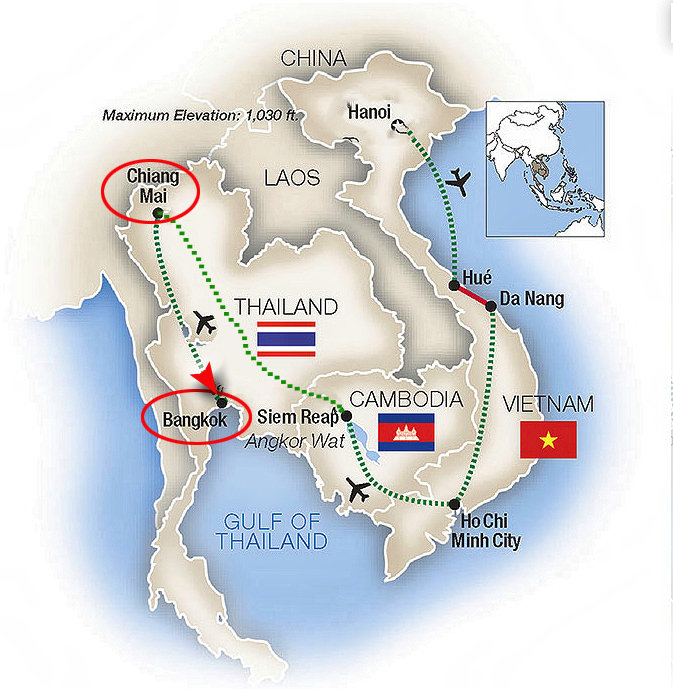Thailand: Bangkok - The Chao Phraya River At Sunset
Mar 15, 2023 14:03:12 #
We reluctantly left the peaceful and beautiful Four Seasons Resort in Chiang Mai for the flight to Bangkok late in the afternoon. We stayed at the riverfront Royal Orchid Sheraton Hotel & Towers where we had great views of the historic Chao Phraya River, known as the "River of Kings", and were treated to a magnificent sunset.
Bangkok, officially known in Thai as Krung Thep Maha Nakhon and colloquially as Krung Thep, is the capital and most populous city of Thailand. The city occupies 1,568.7 square kilometres (605.7 sq mi) in the Chao Phraya River delta in central Thailand and has an estimated population of 10.539 million as of 2020, 15.3 percent of the country's population. Over 14 million people (22.2 percent) lived within the surrounding Bangkok Metropolitan Region at the 2010 census, making Bangkok an extreme primate city, dwarfing Thailand's other urban centres in both size and importance to the national economy.
Bangkok traces its roots to a small trading post during the Ayutthaya Kingdom in the 15th century, which eventually grew and became the site of two capital cities, Thonburi in 1768 and Rattanakosin in 1782. Bangkok was at the heart of the modernization of Siam, later renamed Thailand, during the late-19th century, as the country faced pressures from the West. The city was at the centre of Thailand's political struggles throughout the 20th century, as the country abolished absolute monarchy, adopted constitutional rule, and underwent numerous coups and several uprisings. The city, incorporated as a special administrative area under the Bangkok Metropolitan Administration in 1972, grew rapidly during the 1960s through the 1980s and now exerts a significant impact on Thailand's politics, economy, education, media and modern society.
The Asian investment boom in the 1980s and 1990s led many multinational corporations to locate their regional headquarters in Bangkok. The city is now a regional force in finance, business and pop culture. It is an international hub for transport and health care, and has emerged as a centre for the arts, fashion, and entertainment. The city is known for its street life and cultural landmarks, as well as its red-light districts. The Grand Palace and Buddhist temples including Wat Arun and Wat Pho stand in contrast with other tourist attractions such as the nightlife scenes of Khaosan Road and Patpong. Bangkok is among the world's top tourist destinations, and has been named the world's most visited city consistently in several international rankings.
Bangkok's rapid growth coupled with little urban planning has resulted in a haphazard cityscape and inadequate infrastructure. Despite an extensive expressway network, an inadequate road network and substantial private car usage have led to chronic and crippling traffic congestion, which caused severe air pollution in the 1990s. The city has since turned to public transport in an attempt to solve the problem, operating eight urban rail lines and building other public transit, but congestion still remains a prevalent issue.
HISTORY
The history of Bangkok dates at least back to the early 15th century, to when it was a village on the west bank of the Chao Phraya River, under the rule of Ayutthaya.[9] Because of its strategic location near the mouth of the river, the town gradually increased in importance. Bangkok initially served as a customs outpost with forts on both sides of the river, and was the site of a siege in 1688 in which the French were expelled from Siam. After the fall of Ayutthaya to the Burmese in 1767, the newly crowned King Taksin established his capital at the town, which became the base of the Thonburi Kingdom. In 1782, King Phutthayotfa Chulalok (Rama I) succeeded Taksin, moved the capital to the eastern bank's Rattanakosin Island, thus founding the Rattanakosin Kingdom. The City Pillar was erected on 21 April 1782, which is regarded as the date of foundation of Bangkok as the capital.
Bangkok's economy gradually expanded through international trade, first with China, then with Western merchants returning in the early-to-mid 19th century. As the capital, Bangkok was the centre of Siam's modernization as it faced pressure from Western powers in the late-19th century. The reigns of Kings Mongkut (Rama IV, r. 1851–68) and Chulalongkorn (Rama V, r. 1868–1910) saw the introduction of the steam engine, printing press, rail transport and utilities infrastructure in the city, as well as formal education and healthcare. Bangkok became the centre stage for power struggles between the military and political elite as the country abolished absolute monarchy in 1932.
As Thailand allied with Japan in World War II, Bangkok was subjected to Allied bombing, but rapidly grew in the post-war period as a result of US aid and government-sponsored investment. Bangkok's role as a US military R&R destination boosted its tourism industry as well as firmly establishing it as a sex tourism destination. Disproportionate urban development led to increasing income inequalities and migration from rural areas into Bangkok; its population surged from 1.8 million to 3 million in the 1960s.
Following the US withdrawal from Vietnam in 1973, Japanese businesses took over as leaders in investment, and the expansion of export-oriented manufacturing led to growth of the financial market in Bangkok. Rapid growth of the city continued through the 1980s and early 1990s, until it was stalled by the 1997 Asian financial crisis. By then, many public and social issues had emerged, among them the strain on infrastructure reflected in the city's notorious traffic jams. Bangkok's role as the nation's political stage continues to be seen in strings of popular protests, from the student uprisings in 1973 and 1976, anti-military demonstrations in 1992, and frequent street protests since 2006, including those by groups opposing and supporting former prime minister Thaksin Shinawatra from 2006 to 2013, and a renewed student-led movement in 2020.
Administration of the city was first formalized by King Chulalongkorn in 1906, with the establishment of Monthon Krung Thep Phra Maha Nakhon as a national subdivision. In 1915, the monthon was split into several provinces, the administrative boundaries of which have since further changed. The city in its current form was created in 1972 with the formation of the Bangkok Metropolitan Administration (BMA), following the merger of Phra Nakhon province on the eastern bank of the Chao Phraya and Thonburi province on the west during the previous year.
TOURISM
Bangkok is one of the world's top tourist destinations. Of 162 cities worldwide, MasterCard ranked Bangkok as the top destination city by international visitor arrivals in its Global Destination Cities Index 2018, ahead of London, with just over 20 million overnight visitors in 2017. This was a repeat of its 2017 ranking (for 2016). Euromonitor International ranked Bangkok fourth in its Top City Destinations Ranking for 2016. Bangkok was also named "World's Best City" by Travel + Leisure magazine's survey of its readers for four consecutive years, from 2010 to 2013. As the main gateway through which visitors arrive in Thailand, Bangkok is visited by the majority of international tourists to the country. Domestic tourism is also prominent. The Department of Tourism recorded 26,861,095 Thai and 11,361,808 foreign visitors to Bangkok in 2010. Lodgings were made by 15,031,244 guests, who occupied 49.9 percent of the city's 86,687 hotel rooms. Bangkok also topped the list as the world's most popular tourist destinations in 2017 rankings.
Bangkok's multi-faceted sights, attractions and city life appeal to diverse groups of tourists. Royal palaces and temples as well as several museums constitute its major historical and cultural tourist attractions. Shopping and dining experiences offer a wide range of choices and prices. The city is also famous for its dynamic nightlife. Although Bangkok's sex tourism scene is well known to foreigners, it is usually not openly acknowledged by locals or the government.
Among Bangkok's well-known sights are the Grand Palace and major Buddhist temples, including Wat Phra Kaew, Wat Pho, and Wat Arun. The Giant Swing and Erawan Shrine demonstrate Hinduism's deep-rooted influence in Thai culture. Vimanmek Mansion in Dusit Palace is famous as the world's largest teak building, while the Jim Thompson House provides an example of traditional Thai architecture. Other major museums include the Bangkok National Museum and the Royal Barge National Museum. Cruises and boat trips on the Chao Phraya and the canals of Thonburi offer views of some of the city's traditional architecture and ways of life on the waterfront.
Shopping venues, many of which are popular with both tourists and locals, range from the shopping centres and department stores concentrated in Siam and Ratchaprasong to the sprawling Chatuchak Weekend Market. Taling Chan Floating Market is among the few such markets in Bangkok. Yaowarat is known for its shops as well as street-side food stalls and restaurants, which are also found throughout the city. Khao San Road has long been famous as a destination for backpacker tourism, with its budget accommodation, shops and bars attracting visitors from all over the world.
Bangkok has a reputation overseas as a major destination in the sex industry. Although prostitution is technically illegal and is rarely openly discussed in Thailand, it commonly takes place among massage parlours, saunas and hourly hotels, serving foreign tourists as well as locals. Bangkok has acquired the nickname "Sin City of Asia" for its level of sex tourism.
Issues often encountered by foreign tourists include scams, overcharging and dual pricing. In a survey of 616 tourists visiting Thailand, 7.79 percent reported encountering a scam, the most common of which was the gem scam, in which tourists are tricked into buying overpriced jewelry.
https://en.wikipedia.org/wiki/Bangkok
I hope you enjoy these next several sets from Bangkok!
Mark
Bangkok, officially known in Thai as Krung Thep Maha Nakhon and colloquially as Krung Thep, is the capital and most populous city of Thailand. The city occupies 1,568.7 square kilometres (605.7 sq mi) in the Chao Phraya River delta in central Thailand and has an estimated population of 10.539 million as of 2020, 15.3 percent of the country's population. Over 14 million people (22.2 percent) lived within the surrounding Bangkok Metropolitan Region at the 2010 census, making Bangkok an extreme primate city, dwarfing Thailand's other urban centres in both size and importance to the national economy.
Bangkok traces its roots to a small trading post during the Ayutthaya Kingdom in the 15th century, which eventually grew and became the site of two capital cities, Thonburi in 1768 and Rattanakosin in 1782. Bangkok was at the heart of the modernization of Siam, later renamed Thailand, during the late-19th century, as the country faced pressures from the West. The city was at the centre of Thailand's political struggles throughout the 20th century, as the country abolished absolute monarchy, adopted constitutional rule, and underwent numerous coups and several uprisings. The city, incorporated as a special administrative area under the Bangkok Metropolitan Administration in 1972, grew rapidly during the 1960s through the 1980s and now exerts a significant impact on Thailand's politics, economy, education, media and modern society.
The Asian investment boom in the 1980s and 1990s led many multinational corporations to locate their regional headquarters in Bangkok. The city is now a regional force in finance, business and pop culture. It is an international hub for transport and health care, and has emerged as a centre for the arts, fashion, and entertainment. The city is known for its street life and cultural landmarks, as well as its red-light districts. The Grand Palace and Buddhist temples including Wat Arun and Wat Pho stand in contrast with other tourist attractions such as the nightlife scenes of Khaosan Road and Patpong. Bangkok is among the world's top tourist destinations, and has been named the world's most visited city consistently in several international rankings.
Bangkok's rapid growth coupled with little urban planning has resulted in a haphazard cityscape and inadequate infrastructure. Despite an extensive expressway network, an inadequate road network and substantial private car usage have led to chronic and crippling traffic congestion, which caused severe air pollution in the 1990s. The city has since turned to public transport in an attempt to solve the problem, operating eight urban rail lines and building other public transit, but congestion still remains a prevalent issue.
HISTORY
The history of Bangkok dates at least back to the early 15th century, to when it was a village on the west bank of the Chao Phraya River, under the rule of Ayutthaya.[9] Because of its strategic location near the mouth of the river, the town gradually increased in importance. Bangkok initially served as a customs outpost with forts on both sides of the river, and was the site of a siege in 1688 in which the French were expelled from Siam. After the fall of Ayutthaya to the Burmese in 1767, the newly crowned King Taksin established his capital at the town, which became the base of the Thonburi Kingdom. In 1782, King Phutthayotfa Chulalok (Rama I) succeeded Taksin, moved the capital to the eastern bank's Rattanakosin Island, thus founding the Rattanakosin Kingdom. The City Pillar was erected on 21 April 1782, which is regarded as the date of foundation of Bangkok as the capital.
Bangkok's economy gradually expanded through international trade, first with China, then with Western merchants returning in the early-to-mid 19th century. As the capital, Bangkok was the centre of Siam's modernization as it faced pressure from Western powers in the late-19th century. The reigns of Kings Mongkut (Rama IV, r. 1851–68) and Chulalongkorn (Rama V, r. 1868–1910) saw the introduction of the steam engine, printing press, rail transport and utilities infrastructure in the city, as well as formal education and healthcare. Bangkok became the centre stage for power struggles between the military and political elite as the country abolished absolute monarchy in 1932.
As Thailand allied with Japan in World War II, Bangkok was subjected to Allied bombing, but rapidly grew in the post-war period as a result of US aid and government-sponsored investment. Bangkok's role as a US military R&R destination boosted its tourism industry as well as firmly establishing it as a sex tourism destination. Disproportionate urban development led to increasing income inequalities and migration from rural areas into Bangkok; its population surged from 1.8 million to 3 million in the 1960s.
Following the US withdrawal from Vietnam in 1973, Japanese businesses took over as leaders in investment, and the expansion of export-oriented manufacturing led to growth of the financial market in Bangkok. Rapid growth of the city continued through the 1980s and early 1990s, until it was stalled by the 1997 Asian financial crisis. By then, many public and social issues had emerged, among them the strain on infrastructure reflected in the city's notorious traffic jams. Bangkok's role as the nation's political stage continues to be seen in strings of popular protests, from the student uprisings in 1973 and 1976, anti-military demonstrations in 1992, and frequent street protests since 2006, including those by groups opposing and supporting former prime minister Thaksin Shinawatra from 2006 to 2013, and a renewed student-led movement in 2020.
Administration of the city was first formalized by King Chulalongkorn in 1906, with the establishment of Monthon Krung Thep Phra Maha Nakhon as a national subdivision. In 1915, the monthon was split into several provinces, the administrative boundaries of which have since further changed. The city in its current form was created in 1972 with the formation of the Bangkok Metropolitan Administration (BMA), following the merger of Phra Nakhon province on the eastern bank of the Chao Phraya and Thonburi province on the west during the previous year.
TOURISM
Bangkok is one of the world's top tourist destinations. Of 162 cities worldwide, MasterCard ranked Bangkok as the top destination city by international visitor arrivals in its Global Destination Cities Index 2018, ahead of London, with just over 20 million overnight visitors in 2017. This was a repeat of its 2017 ranking (for 2016). Euromonitor International ranked Bangkok fourth in its Top City Destinations Ranking for 2016. Bangkok was also named "World's Best City" by Travel + Leisure magazine's survey of its readers for four consecutive years, from 2010 to 2013. As the main gateway through which visitors arrive in Thailand, Bangkok is visited by the majority of international tourists to the country. Domestic tourism is also prominent. The Department of Tourism recorded 26,861,095 Thai and 11,361,808 foreign visitors to Bangkok in 2010. Lodgings were made by 15,031,244 guests, who occupied 49.9 percent of the city's 86,687 hotel rooms. Bangkok also topped the list as the world's most popular tourist destinations in 2017 rankings.
Bangkok's multi-faceted sights, attractions and city life appeal to diverse groups of tourists. Royal palaces and temples as well as several museums constitute its major historical and cultural tourist attractions. Shopping and dining experiences offer a wide range of choices and prices. The city is also famous for its dynamic nightlife. Although Bangkok's sex tourism scene is well known to foreigners, it is usually not openly acknowledged by locals or the government.
Among Bangkok's well-known sights are the Grand Palace and major Buddhist temples, including Wat Phra Kaew, Wat Pho, and Wat Arun. The Giant Swing and Erawan Shrine demonstrate Hinduism's deep-rooted influence in Thai culture. Vimanmek Mansion in Dusit Palace is famous as the world's largest teak building, while the Jim Thompson House provides an example of traditional Thai architecture. Other major museums include the Bangkok National Museum and the Royal Barge National Museum. Cruises and boat trips on the Chao Phraya and the canals of Thonburi offer views of some of the city's traditional architecture and ways of life on the waterfront.
Shopping venues, many of which are popular with both tourists and locals, range from the shopping centres and department stores concentrated in Siam and Ratchaprasong to the sprawling Chatuchak Weekend Market. Taling Chan Floating Market is among the few such markets in Bangkok. Yaowarat is known for its shops as well as street-side food stalls and restaurants, which are also found throughout the city. Khao San Road has long been famous as a destination for backpacker tourism, with its budget accommodation, shops and bars attracting visitors from all over the world.
Bangkok has a reputation overseas as a major destination in the sex industry. Although prostitution is technically illegal and is rarely openly discussed in Thailand, it commonly takes place among massage parlours, saunas and hourly hotels, serving foreign tourists as well as locals. Bangkok has acquired the nickname "Sin City of Asia" for its level of sex tourism.
Issues often encountered by foreign tourists include scams, overcharging and dual pricing. In a survey of 616 tourists visiting Thailand, 7.79 percent reported encountering a scam, the most common of which was the gem scam, in which tourists are tricked into buying overpriced jewelry.
https://en.wikipedia.org/wiki/Bangkok
I hope you enjoy these next several sets from Bangkok!
Mark
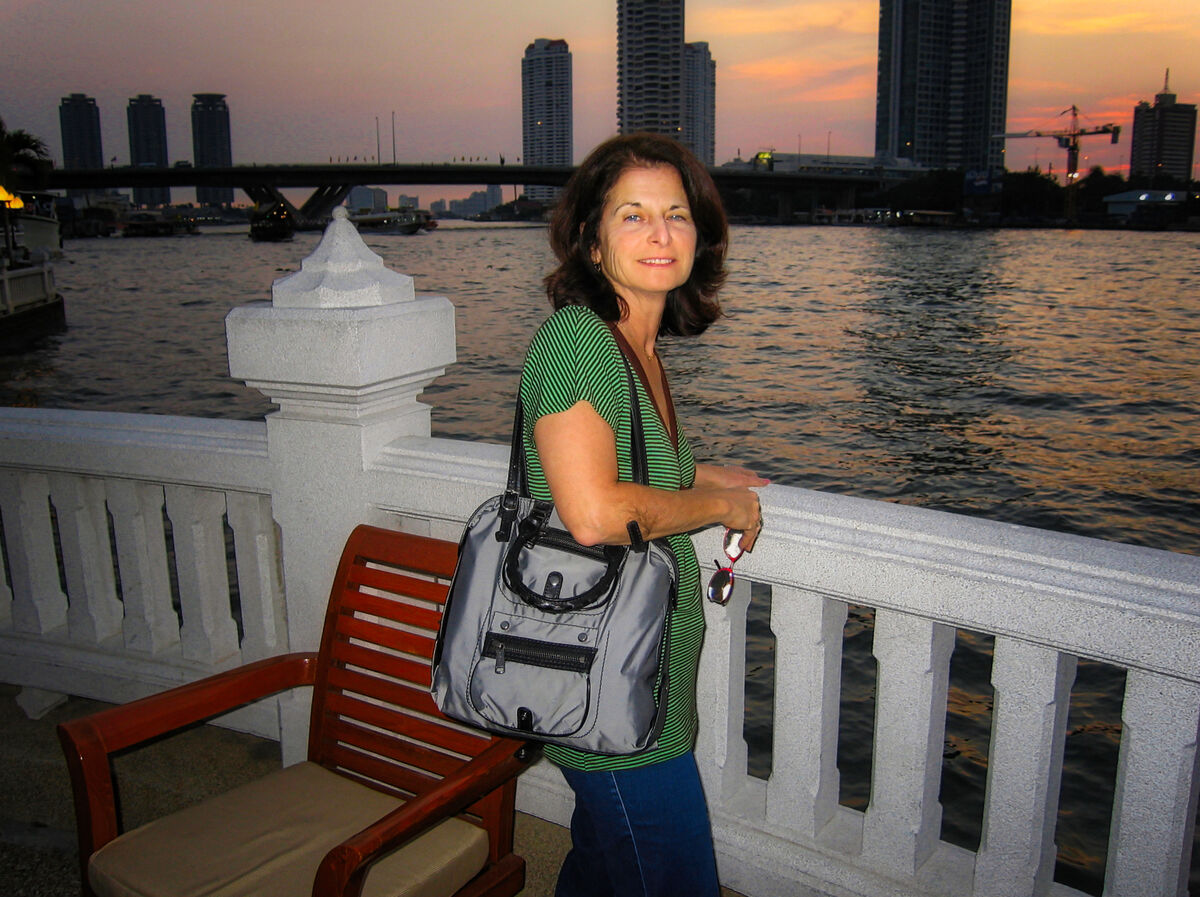
(Download)
Taken from our hotel room balcony
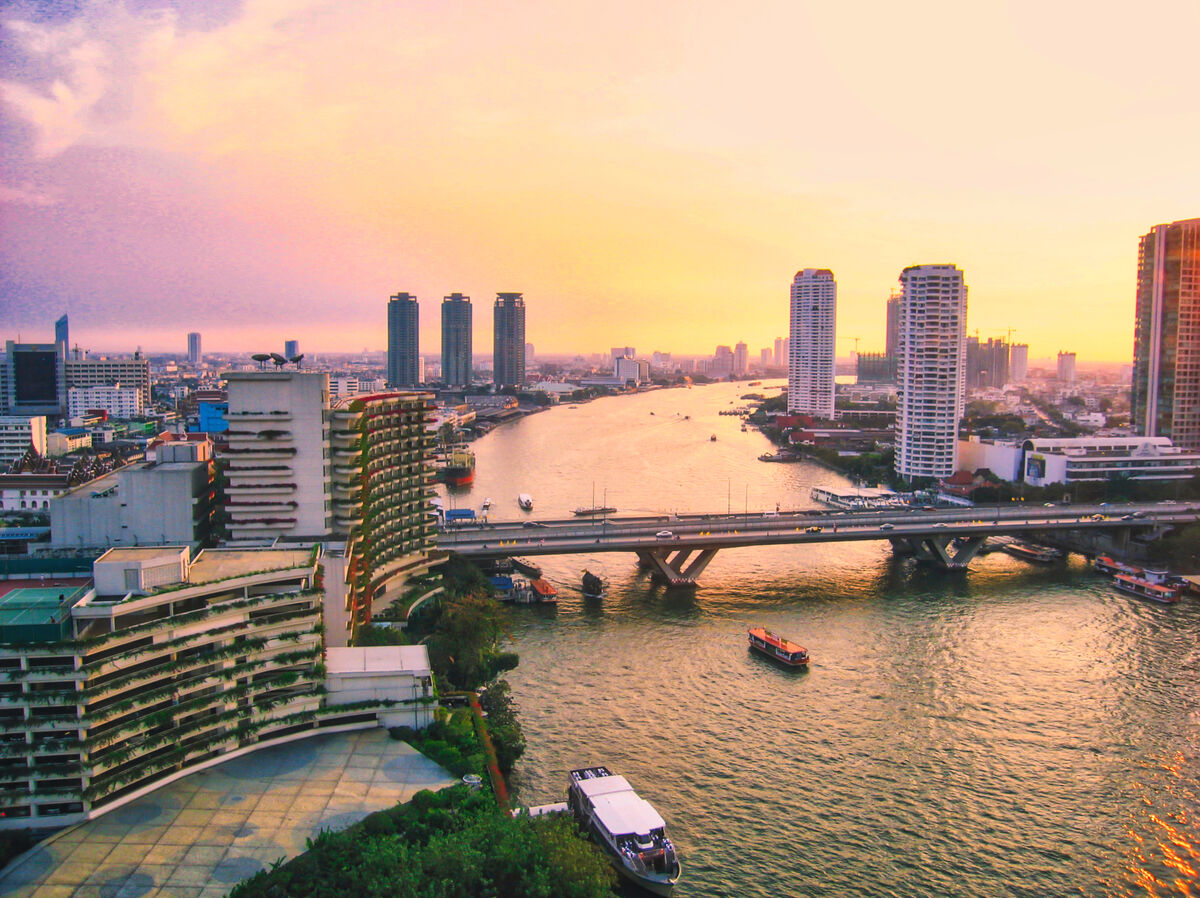
(Download)
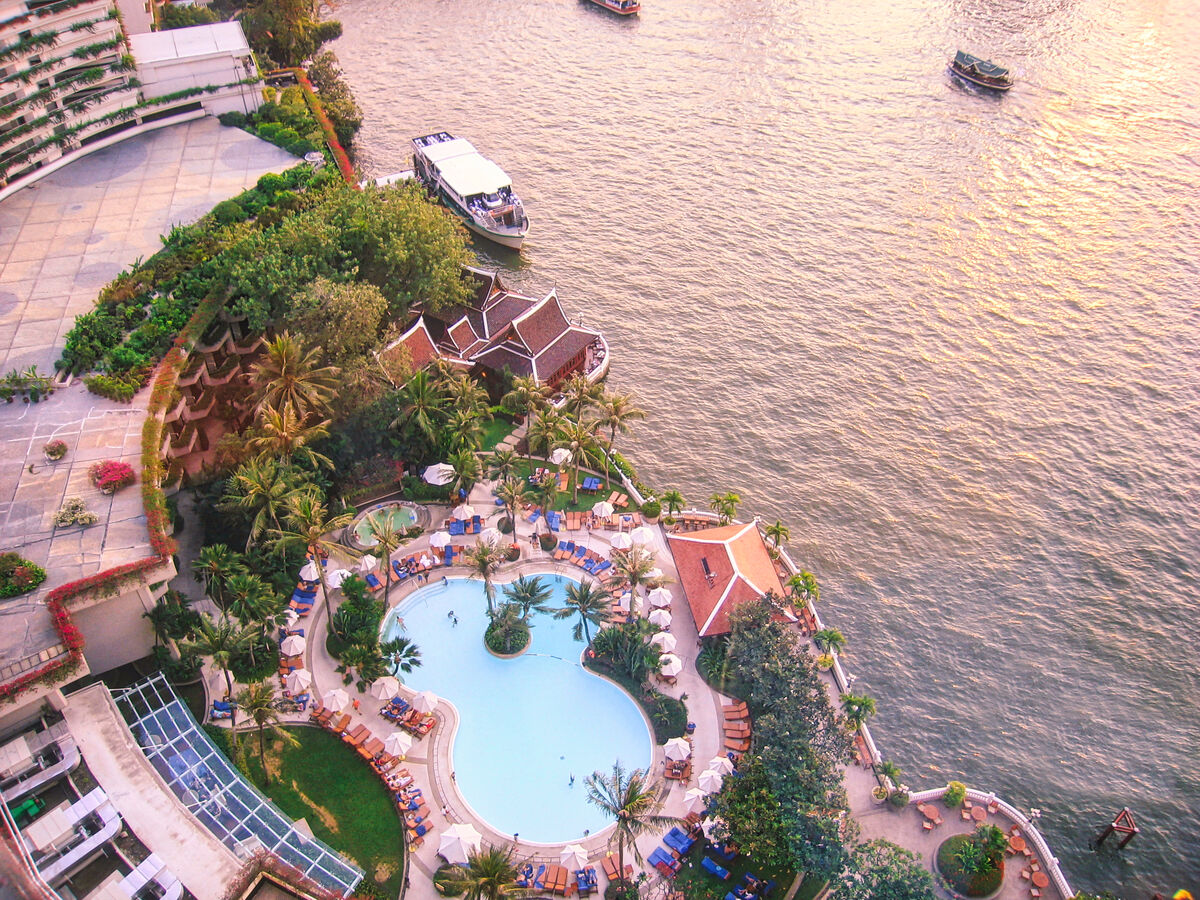
(Download)
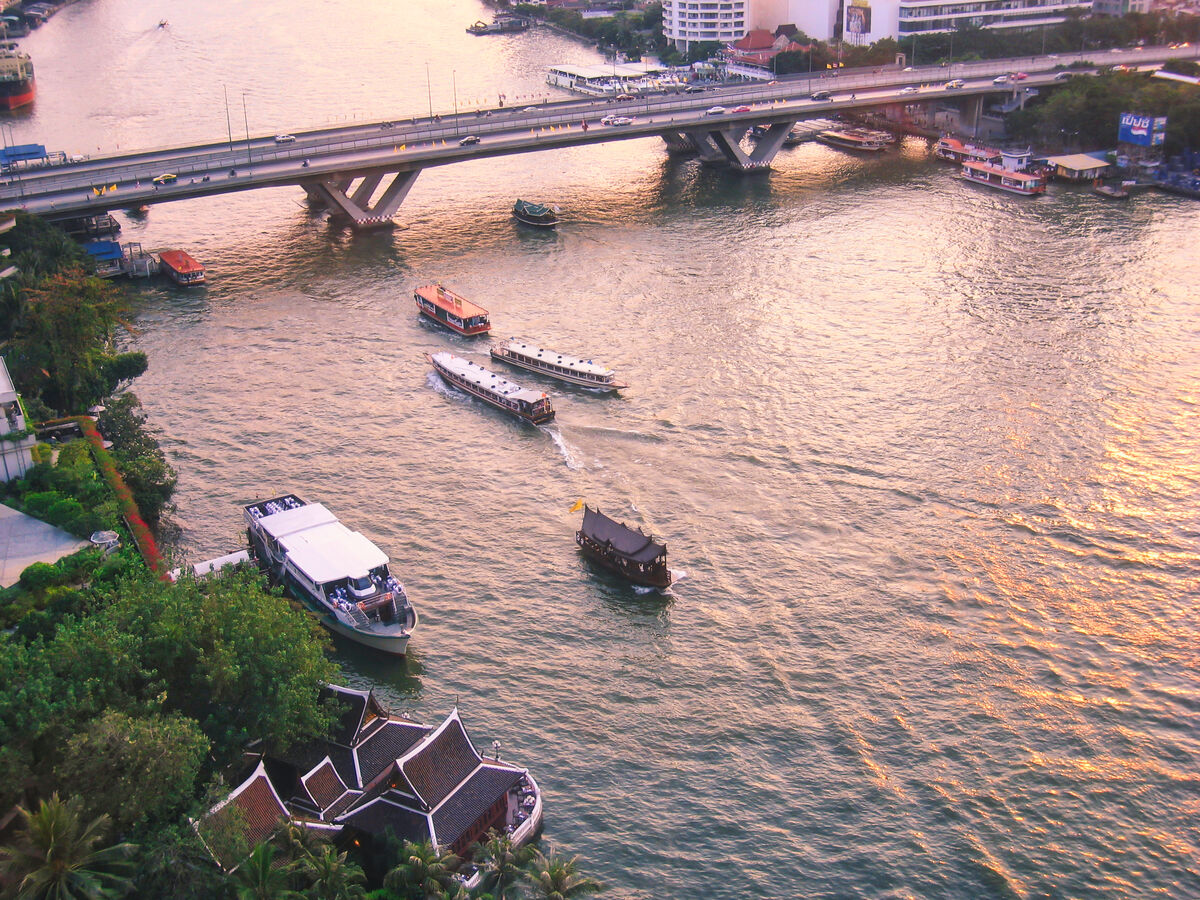
(Download)
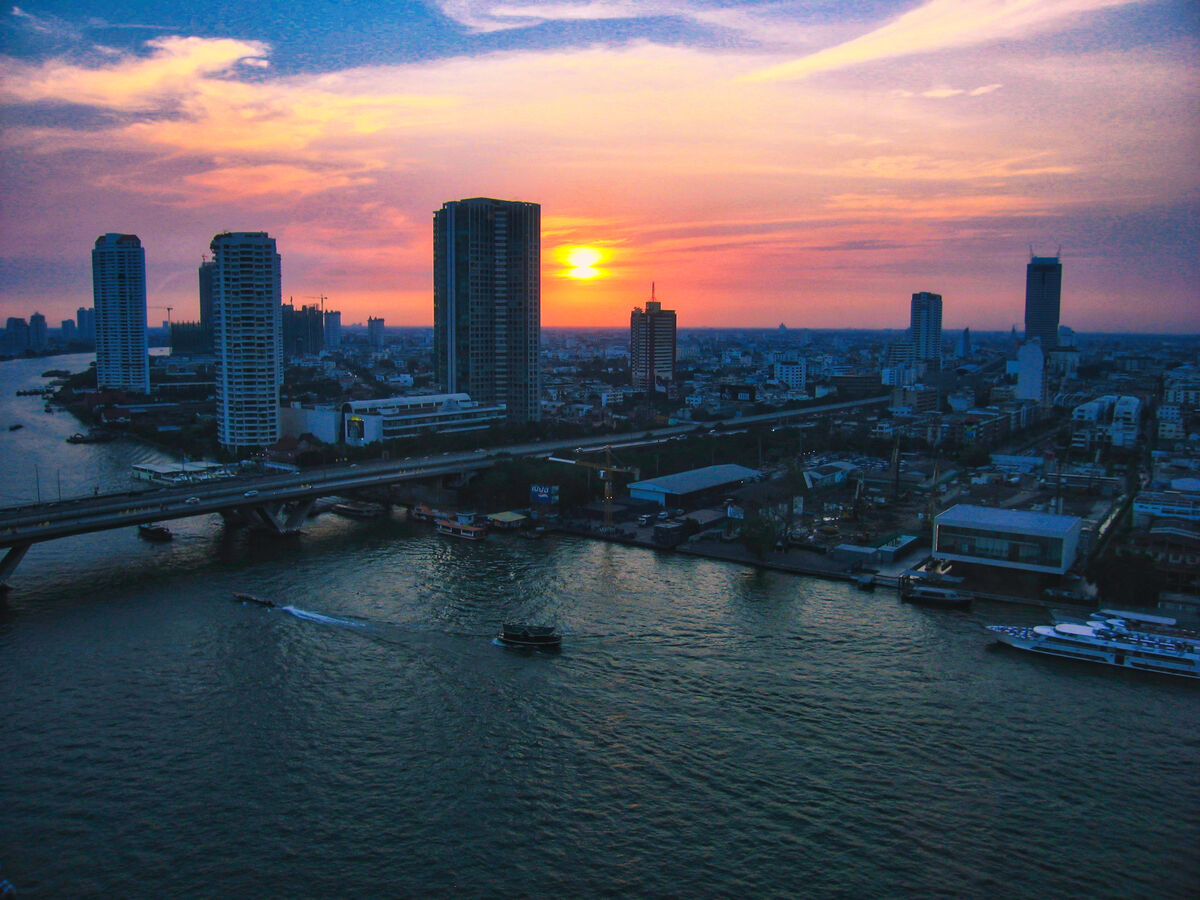
(Download)
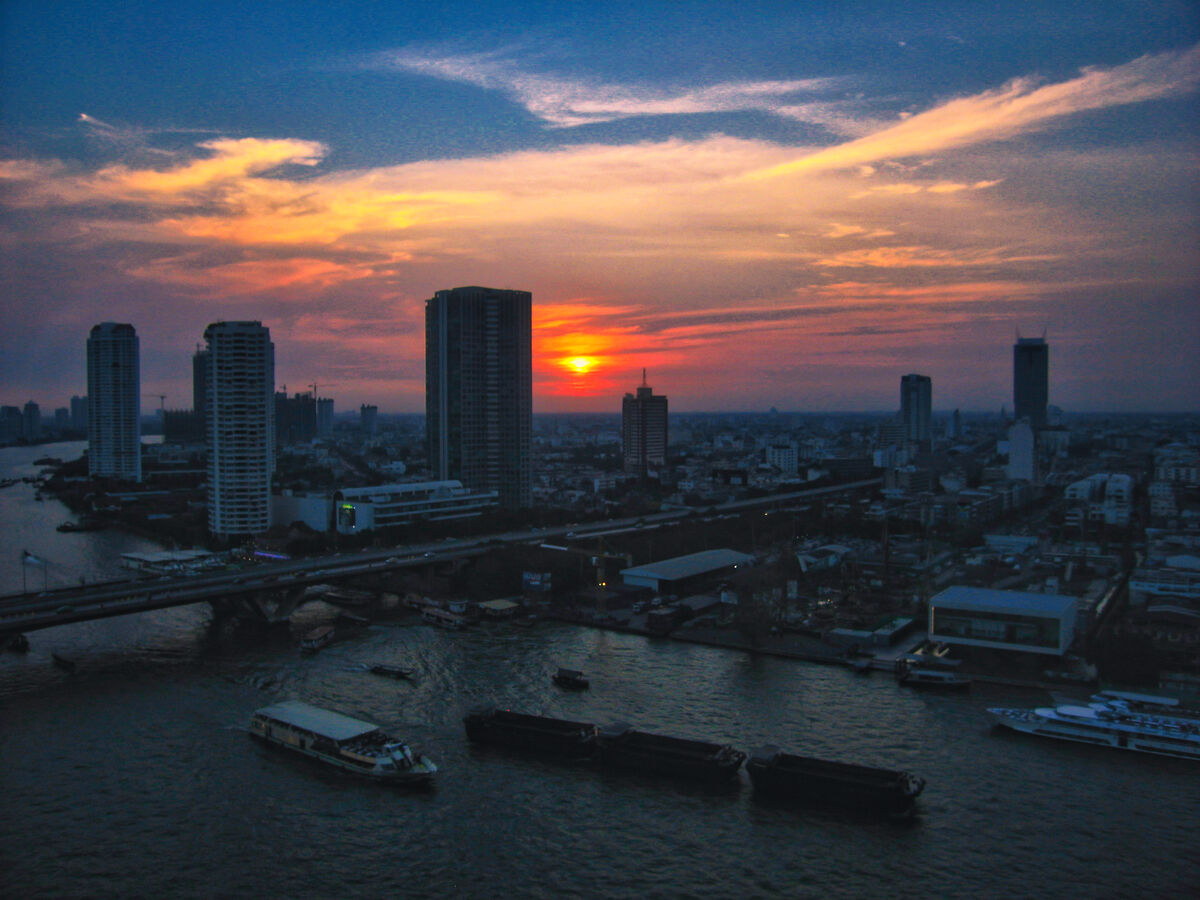
(Download)
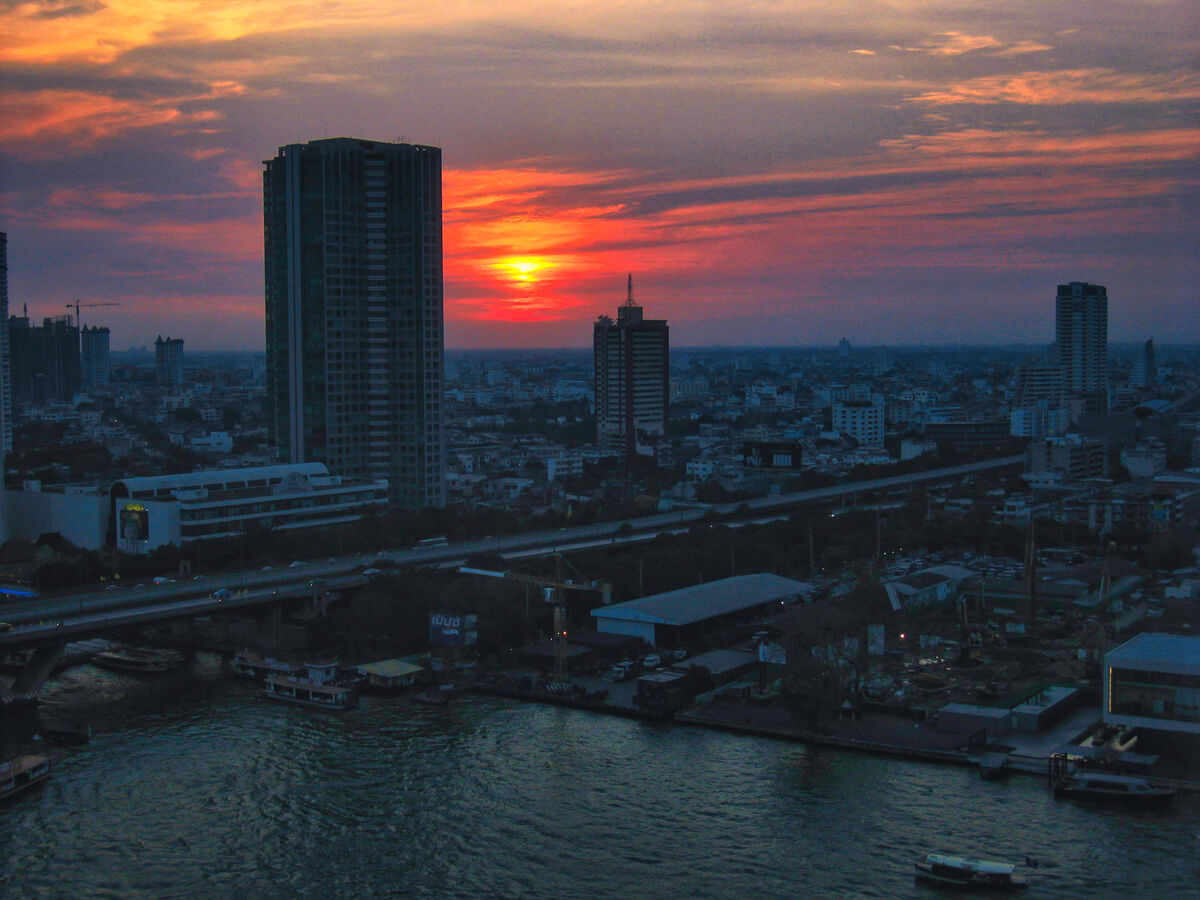
(Download)
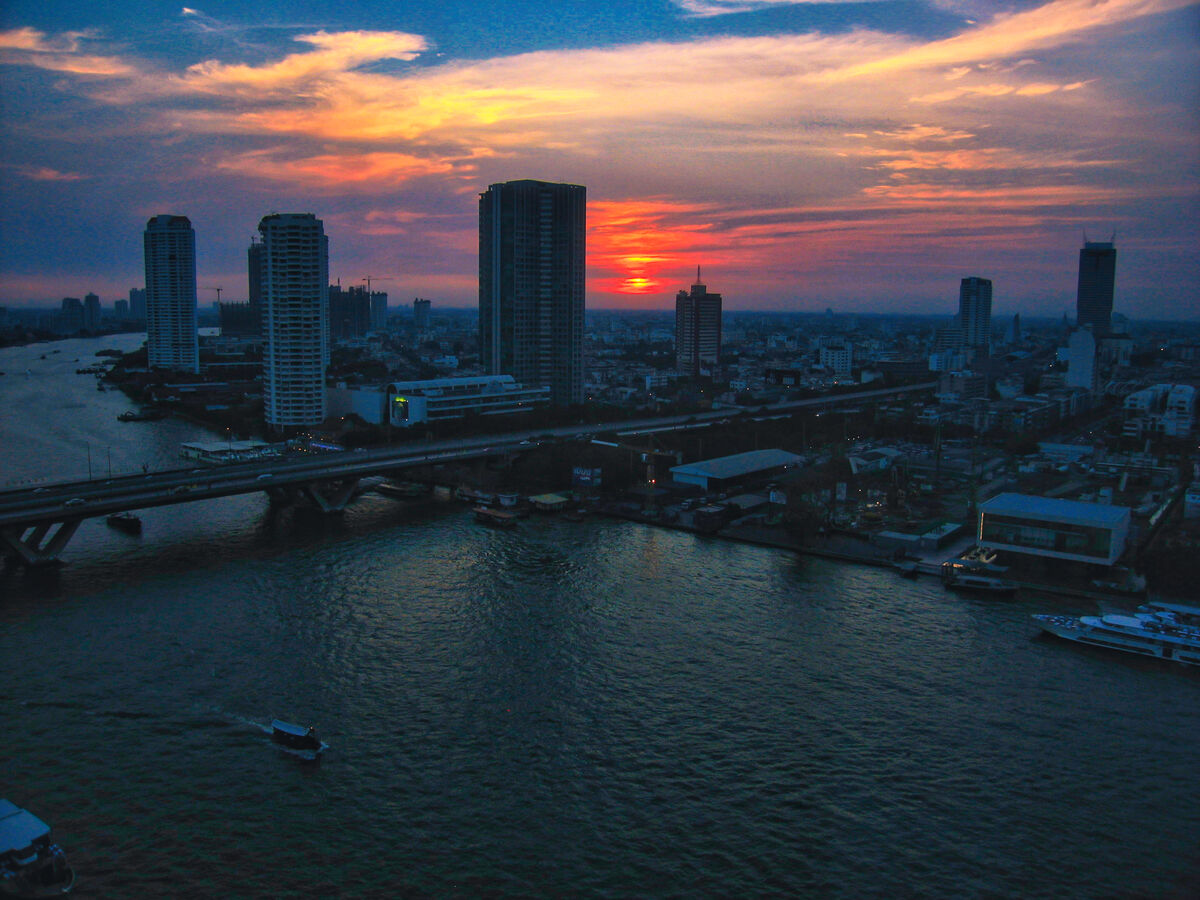
(Download)
A fireworks exhibition to celebrate a VIP hotel guest's birthday - pretty but very loud!
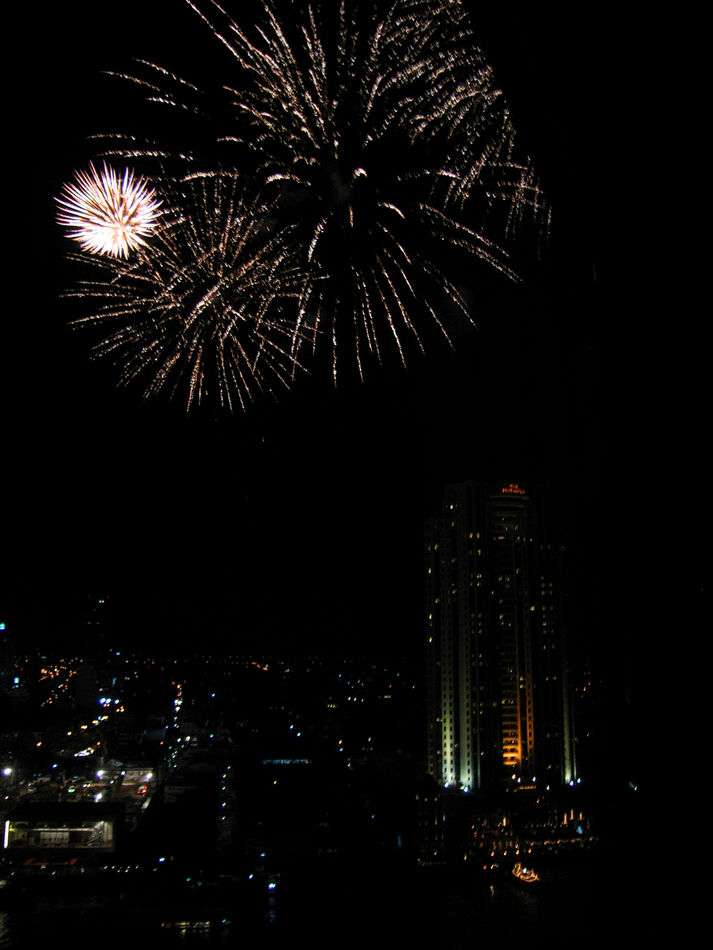
(Download)
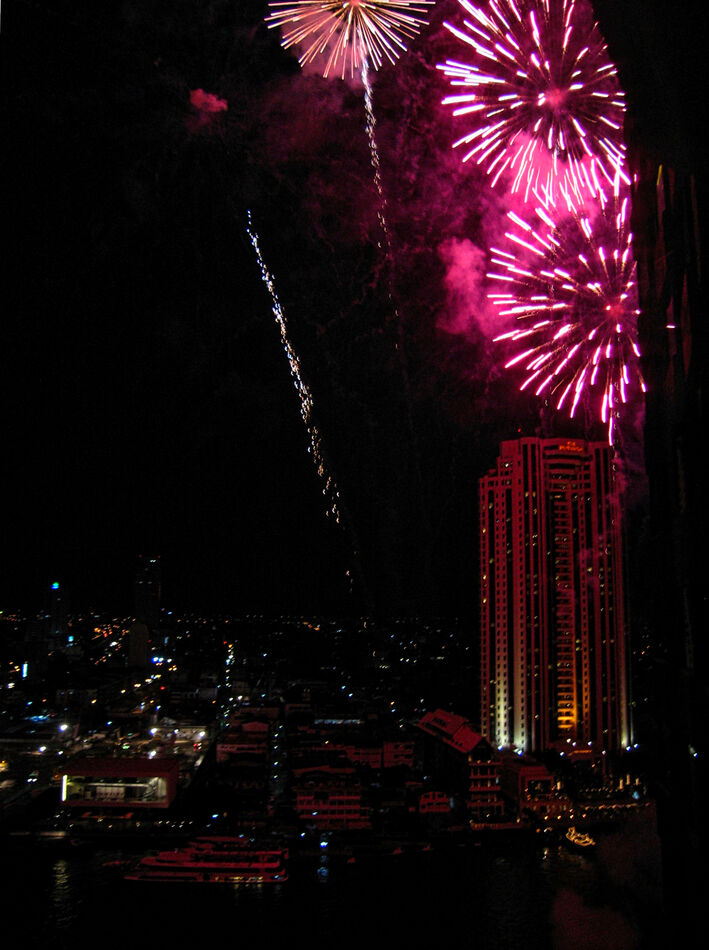
(Download)
Mar 15, 2023 14:04:26 #
Mar 15, 2023 14:12:43 #
I am on the road and happy to see that you are still taking care of Gail.
Mar 15, 2023 14:30:51 #
UTMike wrote:
I am on the road and happy to see that you are still taking care of Gail.
Thanks very much Mike. I always take care of her! Have a good trip.
Mar 15, 2023 14:37:41 #
srfmhg wrote:
We reluctantly left the peaceful and beautiful Fou... (show quote)
Great set of images!!!
You didn't need to buy a jewel!! You had one with you !!
Mar 15, 2023 15:23:17 #
Mar 15, 2023 15:24:04 #
Mar 15, 2023 18:14:59 #
Manglesphoto wrote:
Great set of images!!!
You didn't need to buy a jewel!! You had one with you !!
You didn't need to buy a jewel!! You had one with you !!
Thanks so much Frank. I agree wholeheartedly! She appreciates the compliment.
Mar 15, 2023 18:18:38 #
Excellent, Mark. I've always wanted to visit Thailand. Not so much the cities, though.
Mar 15, 2023 18:20:52 #
srfmhg wrote:
We reluctantly left the peaceful and beautiful Fou... (show quote)
Another excellent set Mark, and you know how I like sunsets.
Mar 15, 2023 18:26:30 #
NMGal wrote:
How come the buildings aren’t lighted?
I'm not sure Barbara. I hadn't noticed. Now that you pointed it out, I'll try and find out. I just saw some modern skyline pictures and the buildings are all lit.
Mar 15, 2023 18:27:00 #
Mar 15, 2023 18:27:54 #
kpmac wrote:
Excellent, Mark. I've always wanted to visit Thailand. Not so much the cities, though.
Thanks very much Ken. I prefer the countryside as well.
Mar 15, 2023 18:28:45 #
DJphoto wrote:
Another excellent set Mark, and you know how I like sunsets.
Thanks very much Dennis. I love your sunset photos!
Mar 15, 2023 18:36:29 #
srfmhg wrote:
I'm not sure Barbara. I hadn't noticed. Now that you pointed it out, I'll try and find out. I just saw some modern skyline pictures and the buildings are all lit.
Don’t waste your time on it. I was just curious.
If you want to reply, then register here. Registration is free and your account is created instantly, so you can post right away.

